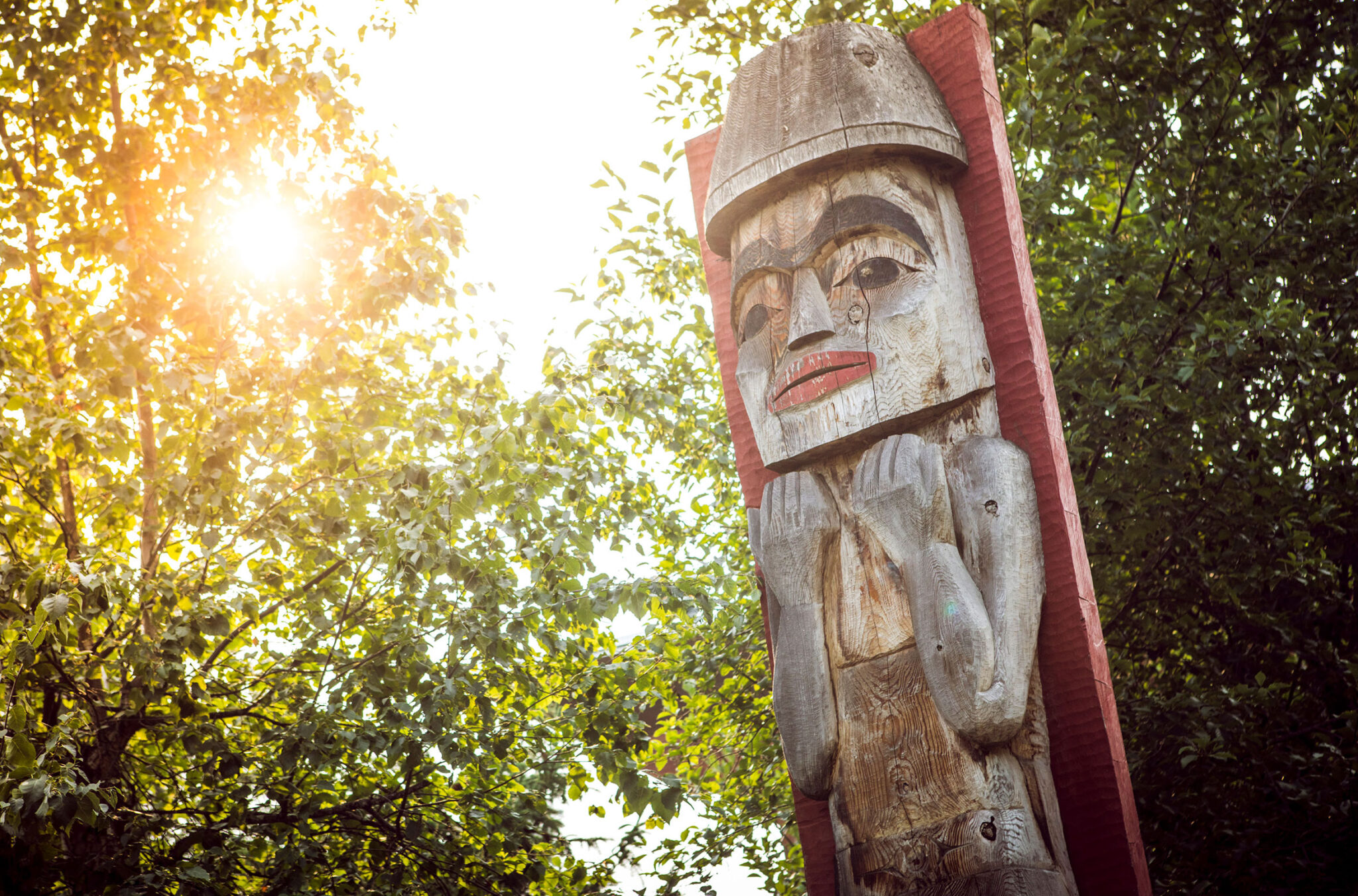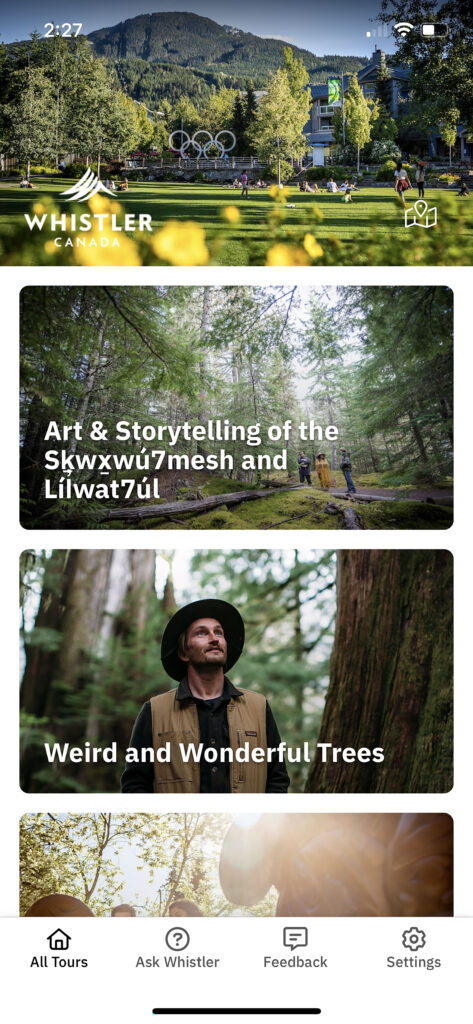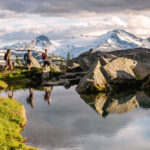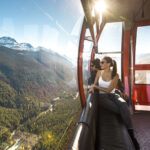Updated August 2024
Whistler is known the world over for its festive atmosphere and abundance of outdoor adventures, but we also honour the human connection to the land that dates back thousands of years. Indigenous peoples have thrived in the Whistler area for millennia and their rich traditions, oral history and contemporary culture can teach us a great deal about how to coexist with the natural world – and one another.
The Líl̓wat7ul (Lil’wat Nation) to the north and Sk̲wxwú7mesh Úxwumixw (Squamish Nation) to the south have stewarded this shared territory since time immemorial. The village of Spo7ez, where Rubble Creek meets the Cheakamus River (16 kilometres south of Whistler), was a communal gathering place for peaceful trade and commerce. Today, the two nations continue their partnership and influence on Whistler and the Sea to Sky through a shared cultural centre and land stewardship.
From ancient mythology to art and cuisine, here are a few tips to broaden your understanding of Indigenous culture in the Whistler area.
Take a Cultural Journey Along Highway 99
You’re likely familiar with the drive up Highway 99, but have you stopped at the viewpoints to learn more about how Indigenous Peoples are connected with the land? The Cultural Journey Sea to Sky, which launched in 2010, is a self-guided interpretive tour, featuring traditional place names, viewpoints and informational signage along the Sea to Sky Highway.
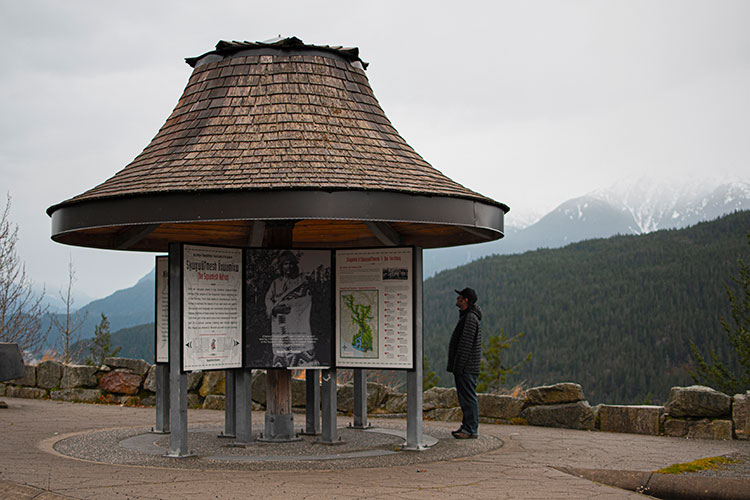
The signature kiosks, which are designed to represent the woven cedar hats worn by Salish Indigenous people of the Pacific Northwest, share fascinating stories of supernatural beings, mythology about important landmarks, and information about how First Nations people lived in harmony with the land.
There are seven kiosks along the drive, including the popular Tantalus Lookout (which you can visit on your southbound drive from Whistler). At this spot, you can look out over the dramatic Tantalus Range and learn about the high alpine mountain goat hunters of the Sk̲wxwú7mesh people and how they played a role in the formation of this rugged mountain range.
Download the audio tour online to accompany your Cultural Journey.
Discover Cultural Exhibits and Indigenous Cuisine
With the Cultural Journey Sea to Sky culminating at the Squamish Lil’wat Cultural Centre (SLCC), it’s only fitting that you stop in to learn more about the area’s Indigenous history, art and culture.
According to the SLCC, the location of the centre is very intentional as it’s nestled into an old-growth forest that contains culturally modified trees that have been preserved for many generations. These trees have been harvested sustainably with only a narrow strip of bark taken so the tree can continue to live. Fitzsimmons Creek, a glacier-fed creek that runs between Whistler and Blackcomb mountains, and along the fringes of Whistler Village, is another area of cultural significance. This is Wolf Clan Territory of the Lil’wat people, who lived nearby and laid their trap line along the creek.
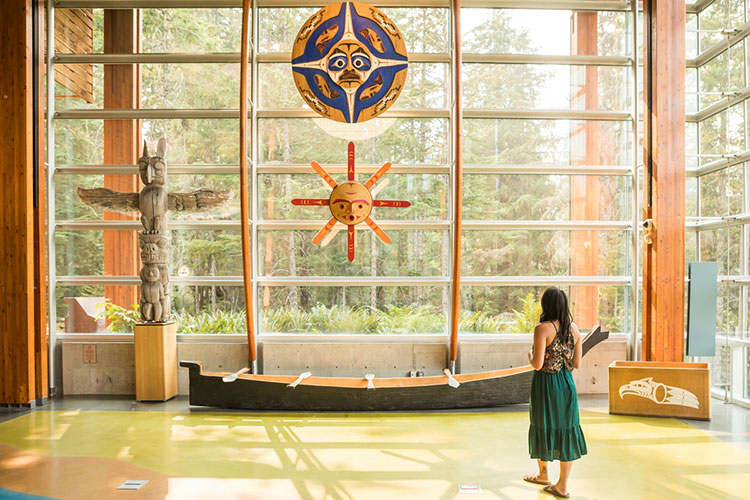
Inside the SLCC you’ll find a host of permanent and temporary exhibits that showcase how the two nations have survived and thrived off the land together. Take a tour of the SLCC with a cultural ambassador and experience a hand-drumming welcome, an inspiring film and a guided exhibit tour.
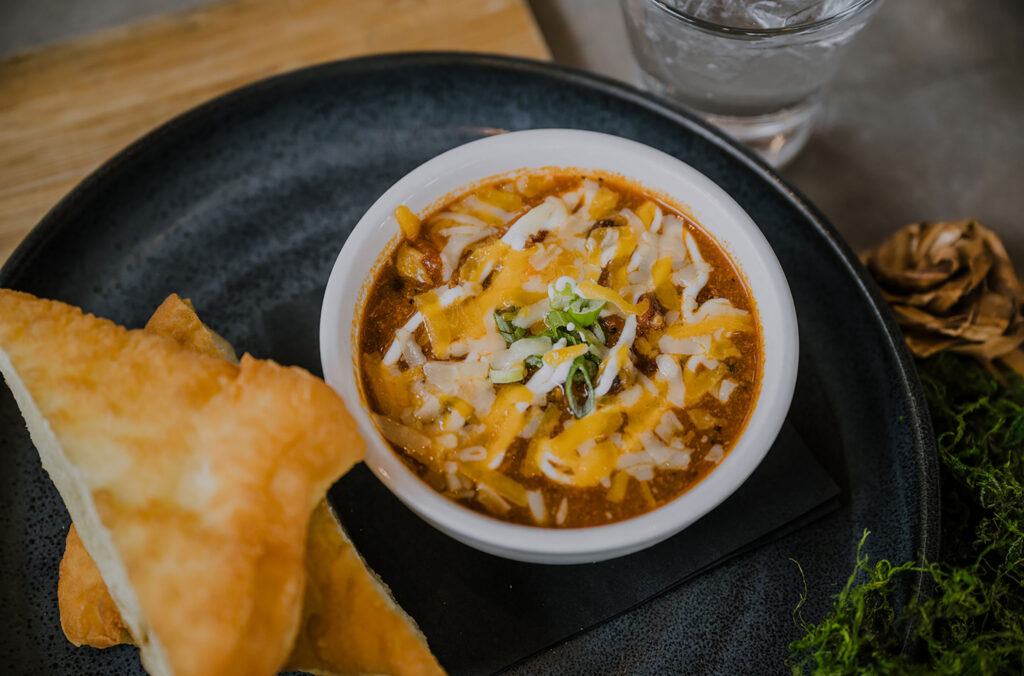
Be sure to pay a visit to the Thunderbird Café at the SLCC, where you can sample Indigenous-inspired cuisine with menu items like Squamish Salmon Chowder, Homemade Lil’wat Venison Chili and Bannock Tacos.
Take a Self-Guided Tour of Indigenous Culture in Whistler Village
Developed by the SLCC in partnership with Tourism Whistler, the Art & Storytelling of the Sḵwx̱wú7mesh and Líl̓wat7úl self-guided tour, can be found on the free Go Whistler Tour app. It takes you to nine locations around Whistler Village that are culturally significant to the Sḵwxw̱ú7mesh Úxwumixw (Squamish Nation) and Lílwat7̓úl (Lil’wat Nation).
This walking tour weaves its way through Whistler Village as you listen to stories about the First Nations’ connection to the land in Whistler. Voiced by members of the Sḵwxw̱ú7mesh Úxwumixw and Lílwat7̓úl the tour is four kilometres long starting from and ending at the SLCC.
“The tour is an invitation for guests to learn about the unceded territory of the Squamish Nation and the Lil’wat Nation here in Whistler,” says Mixalhitsa7 Alison Pascal, SLCC Curator at the Squamish Lil’wat Cultural Centre. “To understand how our art connects our families to our land, and how it transforms our intangible wealth into tangible wealth. Join us in a cultural journey to learn about our homes here in Whistler with stories from our Ancestors.”
Traditional and Contemporary Indigenous Art
Just down the road, the Audain Art Museum houses an impressive collection of traditional and contemporary Indigenous art from across the province, including one of the world’s finest collections of Northwest Coast First Nations masks. The Audain also has a stunning assortment of paintings, installations and carvings by Indigenous artists like Brian Jungen, Shawn Hunt and Fred Davis.
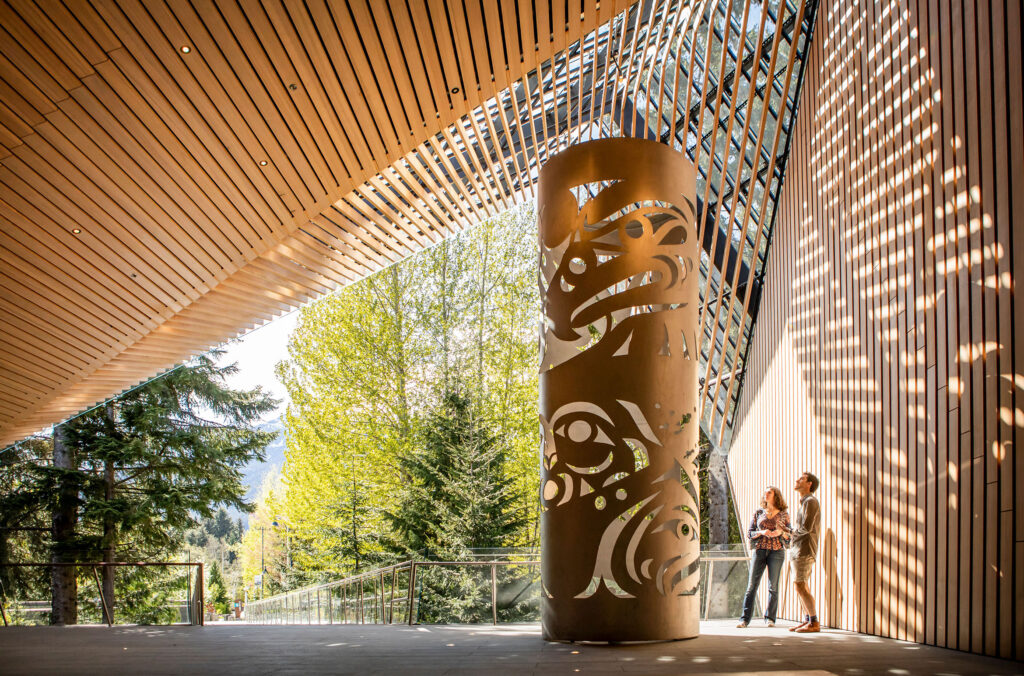
At the entrance to the Audain, you’ll be greeted with a glimmering aluminum totem, carved by Xwalacktun (Rick Harry), who is of Squamish and Kwakwaka’wakw ancestry. The piece is entitled “He-yay meymuy (Big Flood)” and references the story of the Great Flood, which swept through Squamish and forced the nation to take refuge on Nch’kay (Mount Garibaldi).
A newer addition to the artwork outside the Audain is “The Three Watchmen”, a cast bronze sculpture by James Hart (7idansuu) that sits atop a concrete base encircled with a carved aluminum band entitled ‘The Great Flood (Ti A7xa7 St’ak’)’, a collaboration by celebrated Squamish (Skw̲xw̲ú7mesh) Nation artist Xwalacktun (Rick Harry) and Lil’wat (Lil’wat7úl) Nation Levi Nelson (Svpyan).
Learn About Culturally Significant Landmarks
The mountains surrounding Whistler were just as inspiring and mystical thousands of years ago as they are today. In fact, according to Indigenous storytellers, traditional Squamish and Lil’wat medicine people discovered healing powers on their solitary vision quests, which took them to the highest mountain peaks in their territory.
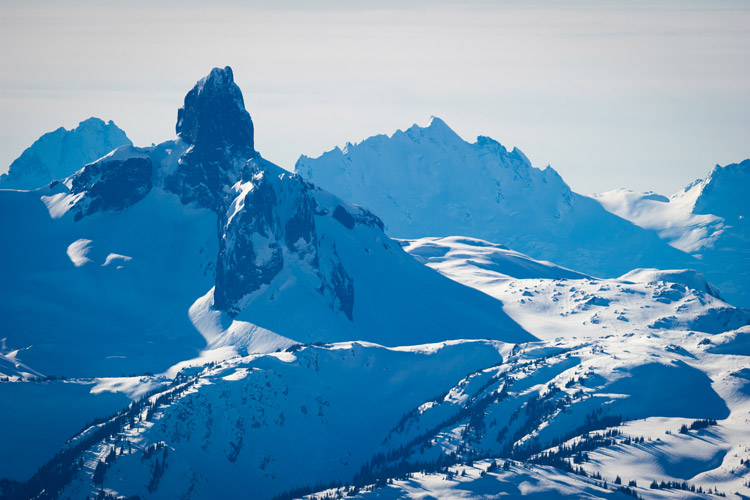
The iconic volcanic cone we call Black Tusk today can be seen from many viewpoints in Whistler Blackcomb’s alpine and from Highway 99. This arrow-shaped peak is a place of particular significance for the Squamish and Lil’wat people as it marked the beginning of the shared territory. Its traditional name is T’ak’t’akmu’y’in Tl’ain7iny’a’xe7en, which translates to roost of the Thunderbird. The origin story attributes the shape and colour of Black Tusk to the Thunderbird, which is a revered creature said to bring thunder and lightning. The Thunderbird features prominently in a number of Indigenous stories from the Whistler area.
Take a Tour of Indigenous Public Art
If you look carefully, you’ll find a host of Indigenous public art installations sprinkled throughout Whistler. There are intricate displays – each with meaningful stories behind them including totems, carvings and statues.
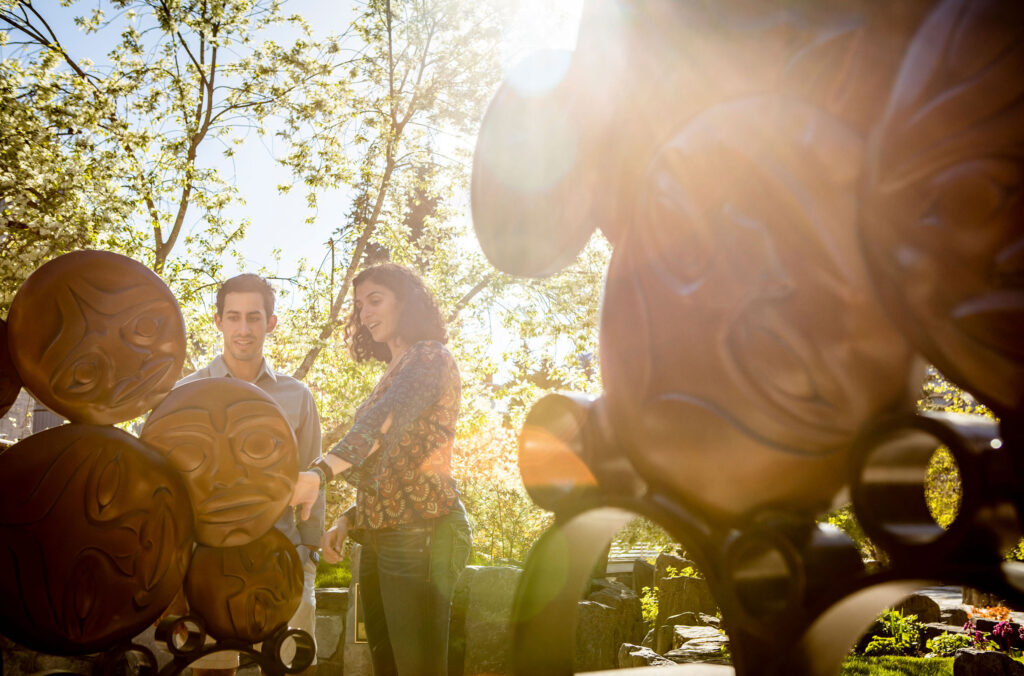
Make sure you pay a visit to A Timeless Circle, a permanent fixture located in the courtyard beside Maury Young Arts Centre that was designed by Musqueam artist, Susan Point. As a legacy of the 2010 Olympic and Paralympic Winter Games, the powerful bronze installation features five fixtures carved with a total of 86 faces that represent the cultural diversity of the 2010 Winter Games and the many generations who have visited and resided on the Whistler lands.
There are plenty more beautiful pieces to discover. Take a self-guided tour of the spectacular Indigenous art in Whistler.
Visit the Salish Welcome Figure on Whistler Mountain
Next time you find yourself atop Whistler Mountain, look up, way up, and admire the Coast Salish welcome figure perched beside the PEAK 2 PEAK Gondola terminal.
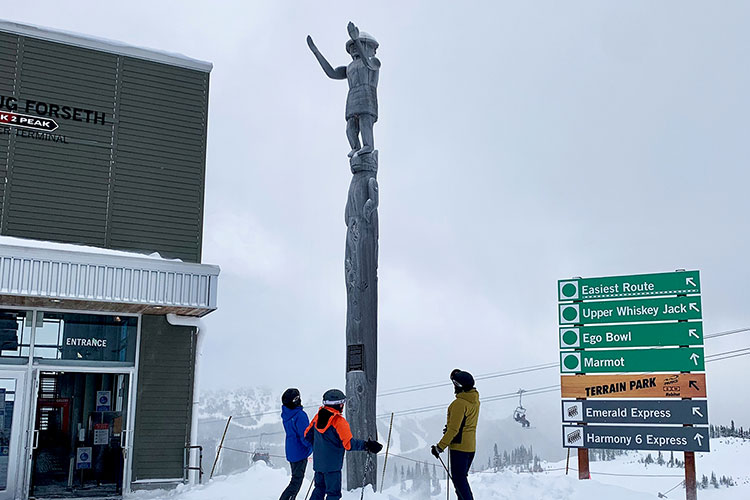
In partnership with the SLCC, Xwalacktun and his son James carved the welcome figure out of a white cedar harvested from the base of Whistler Mountain, using the traditional Squamish carving style. The figure features a human with its arms raised, which symbolizes welcoming people to the territory. The totem also features a marmot, representing the Whistling Marmot (after which Whistler Mountain was named.) The frog at the bottom pays tribute to the Lil’wat Nation, representing transition.
Last year, Squamish Artist Xwalacktun Rick Harry and SLCC Apprentice Brandon Hall carved a new 30-foot pole, which stands at the lower entrance on Lormier Road. It’s a feature of the Summer Salish Carving Series and is in honour of the 100-year anniversary of the Squamish Nation Amalgamation, which happened in July 1923.
This year, Master Carver Jonathan Joe, Lil̓wat7úl (Lil’wat Nation) is mentoring SLCC Apprentice Redmond Q̓áwam̓ Andrews, Lil̓wat7úl (Lil̓’wat Nation). Live carving is happening throughout summer at the entrance to SLCC’s Great Hall, the story pole will incorporate designs that honour the Declaration of the Lillooet Tribes signed in 1911.

Spring savings are calling! There’s so much to see and do in spring, you’ll want plenty of time for fun in the sun. Extend your stay and book midweek for increased savings, with 3 nights starting from $135 CAD per night.
For summer, book ahead and save up to 25% on lodging. Plus, you'll receive a free $100 CAD Activity Voucher on stays of 3 or more nights ($200 for 5 nights).
Insider Tip: BC or Washington resident? Sign up for Whistler Rewards to access additional savings and exclusive perks.
